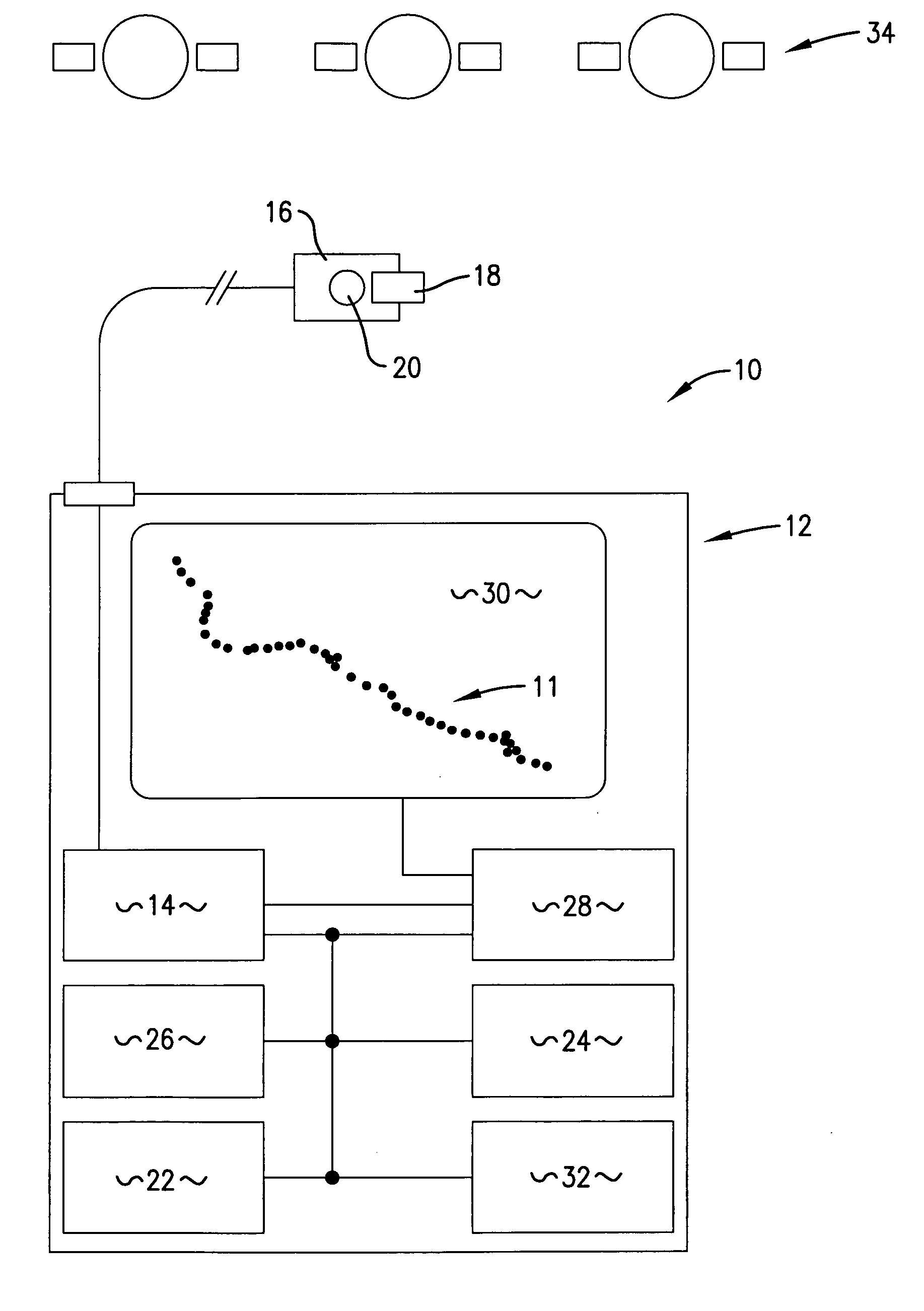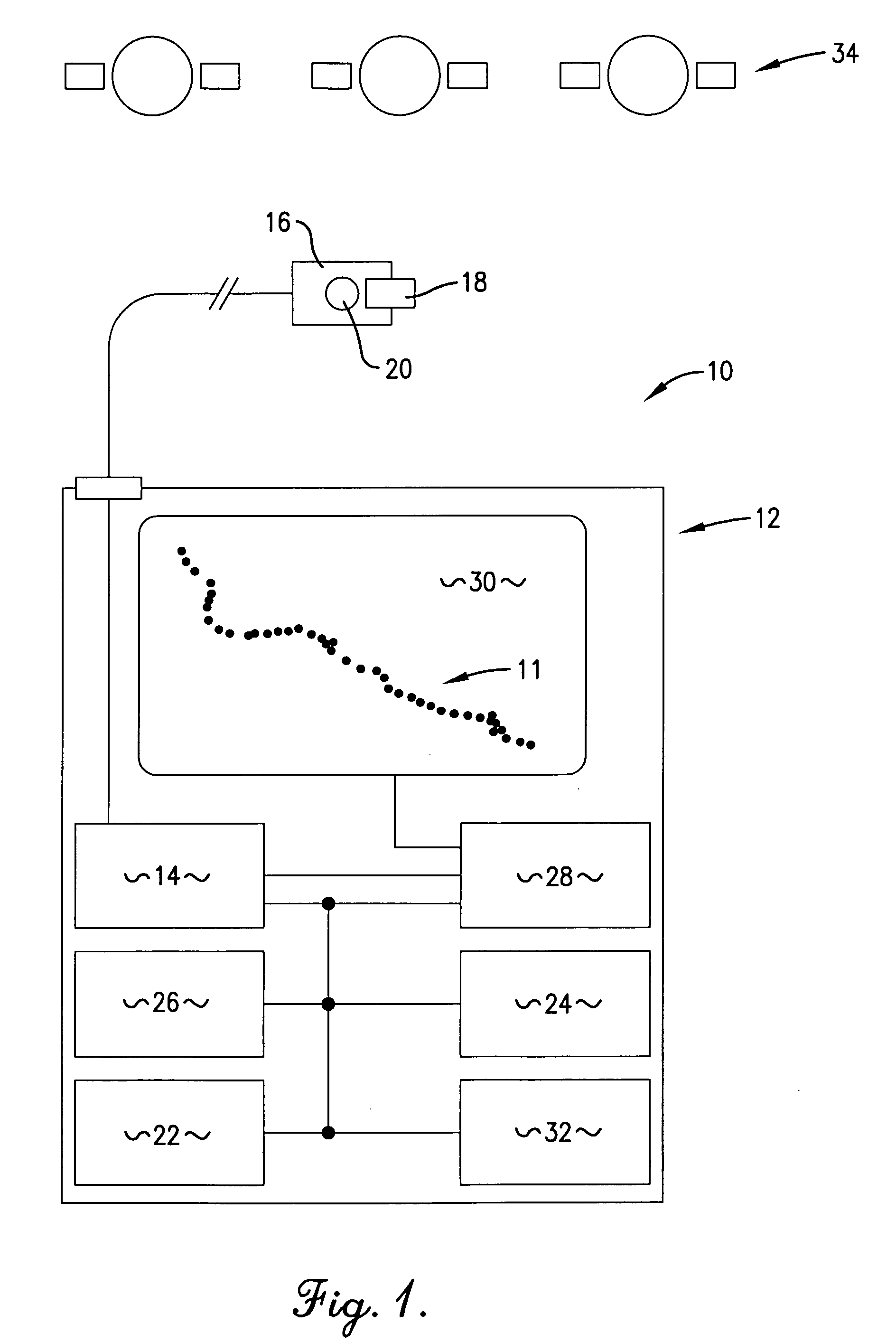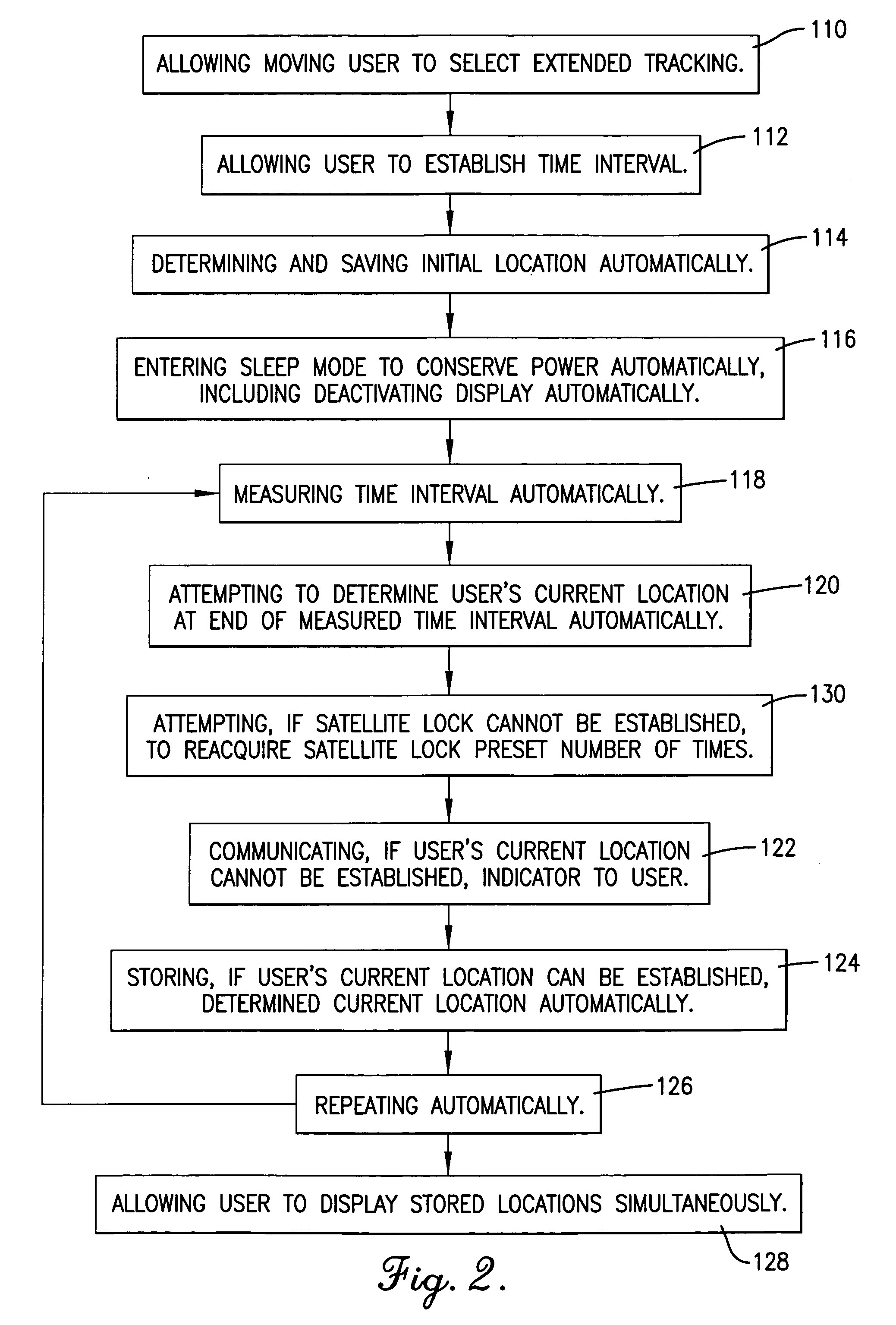Apparatus and method for allowing user to track path of travel over extended period of time
a technology of extended period and applicability, applied in the direction of sustainable buildings, navigation instruments, instruments, etc., can solve the problems of wasting power, unable to quickly achieve the satellite lock, and limiting the maximum number of waypoints that can be designated
- Summary
- Abstract
- Description
- Claims
- Application Information
AI Technical Summary
Benefits of technology
Problems solved by technology
Method used
Image
Examples
Embodiment Construction
, below.
BRIEF DESCRIPTION OF THE DRAWINGS
[0021] A preferred embodiment of the present invention is described in detail below with reference to the attached drawing figures, wherein:
[0022]FIG. 1 is a block diagram of a preferred embodiment of the apparatus of the present invention;
[0023]FIG. 2 is a flowchart of steps involved in a preferred embodiment of a forward tracking mode or feature of the method of the present invention, as may be implemented by the apparatus of FIG. 1; and
[0024]FIG. 3 is a flowchart of steps involved in a preferred embodiment of a return tracking mode or feature of the method of the present invention, as may be implemented by the apparatus of FIG. 1.
DETAILED DESCRIPTION OF A PREFERRED EMBODIMENT
[0025] With reference to the figures, an apparatus 10 and method for allowing a moving user to automatically track his or her own movement over time is herein described, shown, and otherwise disclosed in accordance with a preferred embodiment of the present invent...
PUM
 Login to View More
Login to View More Abstract
Description
Claims
Application Information
 Login to View More
Login to View More - R&D
- Intellectual Property
- Life Sciences
- Materials
- Tech Scout
- Unparalleled Data Quality
- Higher Quality Content
- 60% Fewer Hallucinations
Browse by: Latest US Patents, China's latest patents, Technical Efficacy Thesaurus, Application Domain, Technology Topic, Popular Technical Reports.
© 2025 PatSnap. All rights reserved.Legal|Privacy policy|Modern Slavery Act Transparency Statement|Sitemap|About US| Contact US: help@patsnap.com



